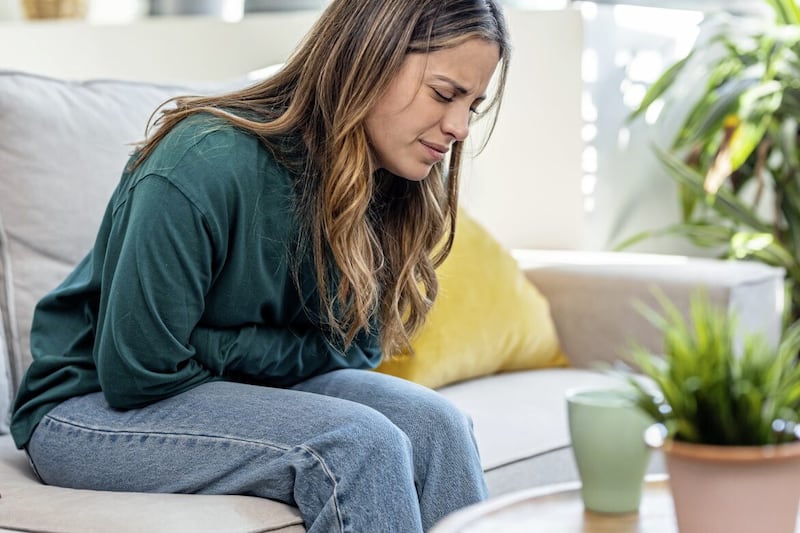Q: My 17-year-old granddaughter was put on the mini pill by her GP for very heavy periods and it worked well for a while. But recently she’s been bleeding all the time. Her GP gave her different medication — and an ultrasound scan and an internal examination found nothing untoward. But it’s extremely distressing for her. What is her next step?
AS
A: LET me first reassure you that the ultrasound scan has indicated there is no major gynaecological abnormality to blame for her continued blood loss.
Therefore, the most likely cause is dysfunctional uterine bleeding, essentially where the normal mechanisms that control the menstrual cycle are disrupted.
This is common in teenagers and around the menopause because the hormones driving the menstrual cycle at both times can behave more unpredictably.
It’s not a disease as such and in the majority of cases it eventually corrects itself naturally.
Your granddaughter’s GP was onto this in prescribing a form of hormonal control, although I’d suggest it’s unlikely it was the mini pill as this contains progestogen (synthetic progesterone) which can itself cause haphazard bleeding. I wonder if she was perhaps prescribed a low-dose oestrogen contraceptive pill, as this can help control the menstrual cycle by stabilising the womb lining.
If so, it’s possible your granddaughter was on the lowest dose (20 micrograms of oestrogen) and the benefit didn’t last.
At that point, rather than switch to a higher dose of oestrogen, her GP decided instead to suppress the bleeding with another treatment, most likely a tablet called tranexamic acid, widely prescribed for heavy bleeding. So far this has not proved helpful, though more time might be needed.
The immediate concern — apart from her obvious embarrassment and distress — is the risk of anaemia due to persistent blood loss.
My view is that she should be given a blood test to check for this and, if she is anaemic, she needs to take an iron supplement. Do stress the importance of good diet — a healthy nutritional intake of the best fresh ingredients is important in providing the right environment for her ovaries to settle into a reliable monthly menstrual cycle.
If the bleeding is excessive and persistent, her GP may need to refer her to a gynaecologist.
Q: I’ve had Morton’s neuroma in my left foot for about two years. I do various recommended exercises to alleviate it but it remains troublesome and painful at times. What else can I do?
FJ
A: Morton’s neuroma is caused by inflammation of a nerve at the point where it runs between the top of two metatarsals — the long bones in the feet — and into the toes.
These nerves can become irritated when the structure of the foot changes over time as a result of ageing: the transverse arch, which is the part of the arch nearest the front of the foot, collapses.
This puts pressure on one or more of the nerves and, at the site of this pressure, you can develop a neuroma, which is essentially a lump of nerve tissue.
In your longer letter you say you’ve self-diagnosed this condition, but it’s advisable to ask your GP for a referral to a specialist for an ultrasound to confirm it is Morton’s neuroma. You could also consult a podiatrist.
Treatment normally involves reducing the pressure on the top (or ‘head’) of the metatarsals by using a shoe insert, usually made of felt, silicone, cork or gel, which spreads the metatarsal heads apart. These pads start at about £5 for a pair and can be purchased from a High Street pharmacy.
It’s also essential to wear broad-fitting footwear.
The exercises you’ve been recommended will help by building up muscles to better support the arch.
If these measures haven’t improved things after a month or two, you may need to be referred for a steroid injection (under local anaesthetic) into the site of the neuroma. This is invariably successful. Rarely, patients may need surgery to remove the neuroma.
Q: Last year, I had a leaking heart valve replaced and am thinking of buying a vibration plate. I am 82 — would it be a safe way to exercise?
MD
A: In my view, it’s safe for you to use a vibration plate, but I do have a caveat.
First, however, for the benefit of other readers, let me explain that a vibration plate is a piece of kit you stand, sit or lean on as it vibrates vigorously. The theory is that this stimulates your muscles.
The big question is, will it do you any good?
The idea is the vibrating platform transmits energy through the body which forces muscles to contract, as if you are exercising. There are claims that using one for just 15 minutes daily aids weight loss, and has a number of beneficial effects on metabolism, such as fat burning and reducing levels of the hormone cortisol, so it’s also a stress buster.
However, there is no high-quality independent research to confirm these claims. Contrast that with cardiac rehabilitation, a supervised exercise programme available on the NHS, where you’re given an exercise programme, dietary advice and support, and where there is clear evidence to show that this can reduce the risk of premature death in patients with coronary heart disease.
It also undoubtedly improves long-term outcomes for patients who, like you, have had heart valve surgery.
My worry is that, while a vibration plate might potentially provide a degree of improvement in fitness, it also provides an excuse to refrain from what we already know is the best activity available — regular physical exercise in some shape or form, as long as there are no other health problems (such as severe hip or knee arthritis) that might prevent you from doing it.
© Solo dmg media






